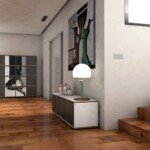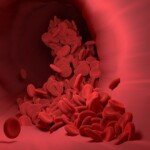Unstoppable force: Unlocking accuracy through CNC water jet cutting
In the ever-evolving manufacturing industry, accuracy is crucial. As the industry has increasingly strict geometric shapes, tolerances, and perfect surface treatments for various materials, traditional cutting methods often cannot meet the requirements. This is the emergence of CNC water jet cutting, which not only serves as an alternative, but also as a revolutionary force – leveraging the original power of water and strengthening it through abrasives to achieve previously unimaginable levels of precision and versatility. At GreatLight, we use our five-axis CNC expertise to push the boundaries of advanced manufacturing, and we recognize that water jet cutting is an indispensable tool to solve complex manufacturing challenges. Let’s dive into the fascinating mechanisms and unrivaled advantages of this technology.
The nature of hydraulic power: working principle of CNC water jet cutting
Imagine a stream of water thinner than a person’s hair, whose movement speed exceeds the speed of sound and carries huge kinetic energy. This is the core of pure water jet cutting. This process seems simple, but it relies on complex physics and precision engineering:
- High pressure generation: High-pressure booster pumps pressurize regular tap water to a startling pressure – usually between 60,000 and 90,000 PSI (sometimes even more than 100,000 PSI). Finetically speaking, this is more than 6,000 times the atmospheric pressure at sea level.
- Key Stream: This ultra-high pressure water is forced through a small hole usually made of sapphire or ruby to form a coherent, extremely concentrated jet flow that flies at supersonic speeds (up to Mach 3).
- Add cutting muscles (Abrasivejet): Pure water is not enough for cutting metals, stones, composites, glass and most hard materials. Here, the magic of the abrasive jet works. Directly below the water hole, abrasive garnet sand particles (an extremely hard mineral) are sucked into the mixing chamber through the Venturi effect. High-speed water flow strongly entrains abrasive particles, accelerating them and converting water jets into aggressive water flow "Liquid saw."
- CNC precision: The computer controlled (CNC) cutting head mounted on a solid gantry system then directs a high-speed stream containing abrasives (or pure water jets for softer materials). Advanced motion control software explains the CAD/CAM design, transforming it into complex cutting paths with excellent speed and accuracy. The cutting head moves precisely on the X, Y axis (usually the Z axis) (for taper control and 3D cutting), guiding the water flow to carve complex shapes from workpieces that are cooled only by the water itself.
Why a waterjet? Highlights
CNC water jet cutting stands out for a variety of reasons, making it a favored solution for countless industries:
- Matter agnosticism: This can be said to be the gem on its crown. Water jet virtual cutting Anything. Metals (soft steel or hardened steel, titanium, aluminum, copper, brass), stone (granite, marble), glass (including laminated or tempered), composites (carbon fiber, Kevlar), plastics (from plexiglass to ultra-high molecular weight glass), rubber, foam, ceramics, and even food – all fall victim to waterjet precision. No need to use different machines for different materials.
- Cold cutting process: No need for a large amount of heat input is revolutionary. Unlike laser, plasma or flame cutting that produces thermally affected zones (HAZs), water jet cutting does not produce thermal deformation, material hardening/weakening, or microstructure changes. This is critical for heat-sensitive materials such as hardened tool steel, certain aerospace alloys or sensitive composites, and for preventing sheet warping.
- Excellent accuracy and edge quality: Modern CNC waterjets achieve excellent tolerances (±0.001" – ±0.005" / 0.025mm – 0.13mm is common, depending on the material and thickness) and produces clean, smooth cuts with very few burrs. No heat-affected zone ensures structural integrity until the cutting edges.
- No mechanical stress: As a non-contact process, the waterjet applies very little mechanical stress or vibration to the workpiece, eliminating the risk of microcracks or deformations commonly found in machining or stamping, which is especially important for brittle materials such as glass or complex composites.
- Complexity: Narrow cut slit (~0.02" – 0.05" /0.5mm – 1.27mm) and lacks heat to cut extremely complex, delicate shapes with sharp corners and small inner radii that are difficult to handle or melt in other thermal processes.
- Minimize waste and cart losses: Thinner cutting widths can directly reduce material waste, which is especially important when using expensive special alloys or materials.
- Environmental awareness: The process uses water and natural garnet abrasives. Although garnet slag needs to be treated, it is usually inert. There is no toxic smoke, gas or hazardous waste generated during the cutting process, significantly reducing the environmental impact compared to certain chemical or thermal processes. Water is often recycled.
Waterjets dominate: rich in applications
The versatility of water jet cutting has driven its adoption in almost all industrial fields:
- Aerospace: Precisely cut high-strength aluminum, titanium, inconel and composite materials for structural components, engine parts, brackets and complex pipes.
- car: Prototypes, washers, interiors (fabrics, foam, leather composites), body panels, brackets and special tools.
- Architecture and Art: Stunning stone countertops, intricate metal exterior walls, intricate interior design elements, sculptures, signage (metal, acrylic), marble inlays and decorative glass panels.
- Industrial Machinery: Cut gears, sprockets, flanges, machine bases, wear plates and replacement parts with hardened steel, usually without post-heat treatment.
- Electronics: Cut insulating plates, housing composite panels, EMI/RFI shielding gaskets and complex plastic parts.
- Medical devices: Precision cutting of surgical tool parts, implants (usually titanium), plastics and non-metallic parts for equipment, without the risk of contamination.
- Tools and molds: Use hardened steel to make molds, punches, dies and custom fixture prototypes to avoid thermal deformation.
GreatLight: Your expert partner in the field of advanced manufacturing, including waterjet solutions
At GreatLight, we are committed to solving the most challenging metal parts manufacturing problems. Although we are known for our advanced technology Five-axis CNC machining Capability – providing unparalleled complexity in component manufacturing – we know that true manufacturing excellence requires the right tools to get the job done. Water jet cutting is an important part of our arsenal and value proposition.
Our commitment is more than just waterjet services. We combine this technology with our deep expertise and broader capabilities:
- Expertise selection: Compared to five-axis machining or other processes, we advise whether the waterjet is indeed the best solution for your project, ensuring that cost and performance goals are met.
- Material mastery: With our extensive experience in material processing, we understand grain structure, hardness and behavior under water jets, optimizing parameters each time for perfect cutting.
- One-stop solution: Manufacturing complex components? no problem. Our precision water jet cutting can follow our interior seamlessly Five-axis machining Suitable for key features requiring ultra-strength tolerances, fine surface finishes, specific hole geometry, or complex 3D profiles. Our comprehensive Post-processing and finishing services (Deburring, heat treatment, anodizing, electroplating, powder coating, polishing) means your parts are fully finished and ready to be assembled.
- Speed and customization: Like all our services, we are good at Quick customization and precision machining and manufacturing, including water jet cutting. Whether it is prototyping or full production operation, we can ensure rapid turnover without compromising quality Most materials.
- Accuracy and value: GreatLight five-axis CNC machining and our supplemental water jet service guarantee accuracy. We provide Competitive pricehigh value solutions to ensure Customized precision parts Deliver efficiently to your specific specifications.
Conclusion: Take advantage of natural precision
CNC water jet cutting is more than just a cutting tool; it proves the originality of engineering, converting the basic power of water into precise, versatile and very clean manufacturing power. Its ability to conquer almost any material without heat-induced degradation, which makes it uniquely valuable in today’s diverse and demanding manufacturing environments. Whether you need complex artwork, solid aerospace components, complex architectural features, or anything in between, water jet cutting can provide solutions that other solutions can’t offer.
Ready to turn your design into reality? From professional CNC water jet cutting to our core five-axis machining technology and comprehensive finishing, GreatLight provides a seamless, high-precision manufacturing journey. Customize your precision parts at the best price now! Please contact GreatLight today to discuss how we can take advantage of our advanced features in your next project.
Frequently Asked Questions about CNC Water Jet Cutting (FAQ)
Q1: How thick can a CNC waterjet cut a material?
Answer: CNC waterjet has excellent thickness capabilities. Common industrial systems can easily cut materials up to 6-8 inches (150-200 mm) in thickness. For some softer materials such as rubber or foam, extremely professional systems can handle materials with thicknesses of more than 12 inches (300 mm) and for metals and stones, they can usually be more than 10 inches, although speed and edge taper are more important factors. For thicker or structurally critical parts, the GreatLight five-axis CNC machining can be used for precise finishing.
Q2: Are the edges left by the waterjet cutting smooth enough for final use?
A: Characteristics of water jet cutting "Striped" Or cut edge matte treatment. for In many applications, this edge is perfectly acceptable as it is. While generally smoother than plasma cutting, it is usually not a polished surface. If a perfectly smooth edge is required (for example, for sealed surfaces or decorative parts), secondary finishing operations such as grinding, milling or polishing may be required (ready provided by GreatLight’s post-processing service).
Q3: What is the accuracy of CNC water jet cutting?
Answer: Modern CNC waterjets have high accuracy. Typical positioning accuracy can reach less than ±0.001" (0.025mm), the cutting tolerance is generally ±0.001" To ±0.005" (±0.025mm to ±0.13mm)depending on the specific machine calibration, material type, thickness and cutting complexity. This level of accuracy can meet the requirements of most industrial applications.
Q4: What is "engraving" and "Gap compensation"?
A: Kerf means Width of material removed by cutting flow. In water jet cutting, the cutout width is very narrow, but measurable (usually 0.020)" To 0.050" /0.5mm to 1.27mm, depending on orifice/nozzle size and material thickness). Cut seam compensation is a process in CNC programming software where the toolpath automatically offsets half of the cut seam width to ensure Final editing part The dimensions are exactly matched with the CAD design dimensions. GreatLight’s expert programming ensures accurate cutout compensation.
Q5: What is the reason for taper caused by waterjet cutting? How to deal with it?
A: Due to the nature of high-speed flow, the top of the cutout is slightly wider than the bottom of the thick cutout, resulting in the smallest cone angle (usually less than 1 degree). Factors that affect taper include material type, thickness, cutting speed, and water pressure. Modern CNC waterjet adopts Dynamic Waterjet® type technology or tilt cutting head (usually part of a 5-axis system) Dynamically adjusts and almost completely eliminates the taper during cutting, creating near-vertical edges even on thick materials.
Q6: Why choose water jet instead of laser cutting?
A: While laser cutting is very suitable for cutting thinner metals and is fast, waterjets do well in laser cutting:
- Thick metal: Water jets are faster and more efficient than laser cutting of thick plate metal.
- Thermal materials: Because of the heat-affected zone (HAZ), waterjets are ideal for work hardened steels, tempered materials, composites, molten plastics (such as many thermoplastics), and heterogeneous materials that are susceptible to thermal cracking.
- Material versatility: Abrasive waterjets can handle reflective materials (copper, brass), transparent materials (glass, acrylics), and heterogeneous materials (composites) that reflect or absorb lasers inconsistently.
- Non-conductive materials: Water jets can cut everything, regardless of electrical conductivity.
Q7: Is it expensive to cut with sand water jet?
A: Cost factors include material cost, part geometry (time on the machine), thickness and garnet abrasive consumption (main consumables). Although the abrasive is expensive, water jets usually prove Extremely cost-effective overall Because it eliminates the secondary operations required for thermal cutting (such as removing heat-affected zones), material waste is greatly reduced due to its narrow slits and nesting efficiency, and can handle materials that require a variety of different processes. GreatLight focuses on optimizing processes for the best value.
Q8: Can GreatLight be used for prototype production and mass production using waterjets?
Answer: Of course. CNC waterjet is very suitable Rapid prototyping and production. We specialize in quickly turning on prototypes using advanced equipment and optimized workflows. For production runs, our efficient nesting and cutting strategies combined with reliable machinery enable us to efficiently perform mass production while maintaining consistent accuracy. Our one-stop service simplifies everything from initial cutting to final finishing.

















